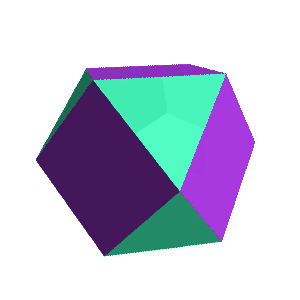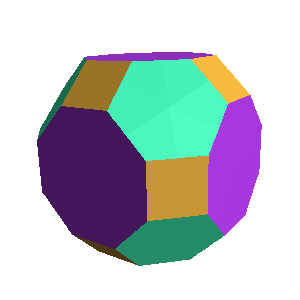
8 triangular faces
6 square faces
12 vertices

8 hexagonal faces
6 octagonal faces
12 square faces

8 triangular faces 6 square faces 12 vertices |

8 hexagonal faces 6 octagonal faces 12 square faces |
To cut off the corners of the cuboctahedron, we move in the same distance from each corner along the edges. The distance we move is less than half of the side length, because it is impossible to move in more. (If we move in exactly half way, the result is the rhombicuboctahedron)
This process shortens the side lengths of the edges in the original cuboctahedron by the same amount. Notice that it also doubles the number of edges -- changing the purple square faces of the cuboctahedron (left) into purple octagonal faces in the truncated cuboctahedron; changing the green triangular faces of the cuboctahedron into green hexagonal faces in the truncated cuboctahedron. (right).
In the cuboctahedron, four faces meet at every vertex. Cutting off the original vertices, then, leaves a square shape behind, which is filled in by the tan squares. The prefix "rhombi" indicates that the truncation results in four-sided faces.